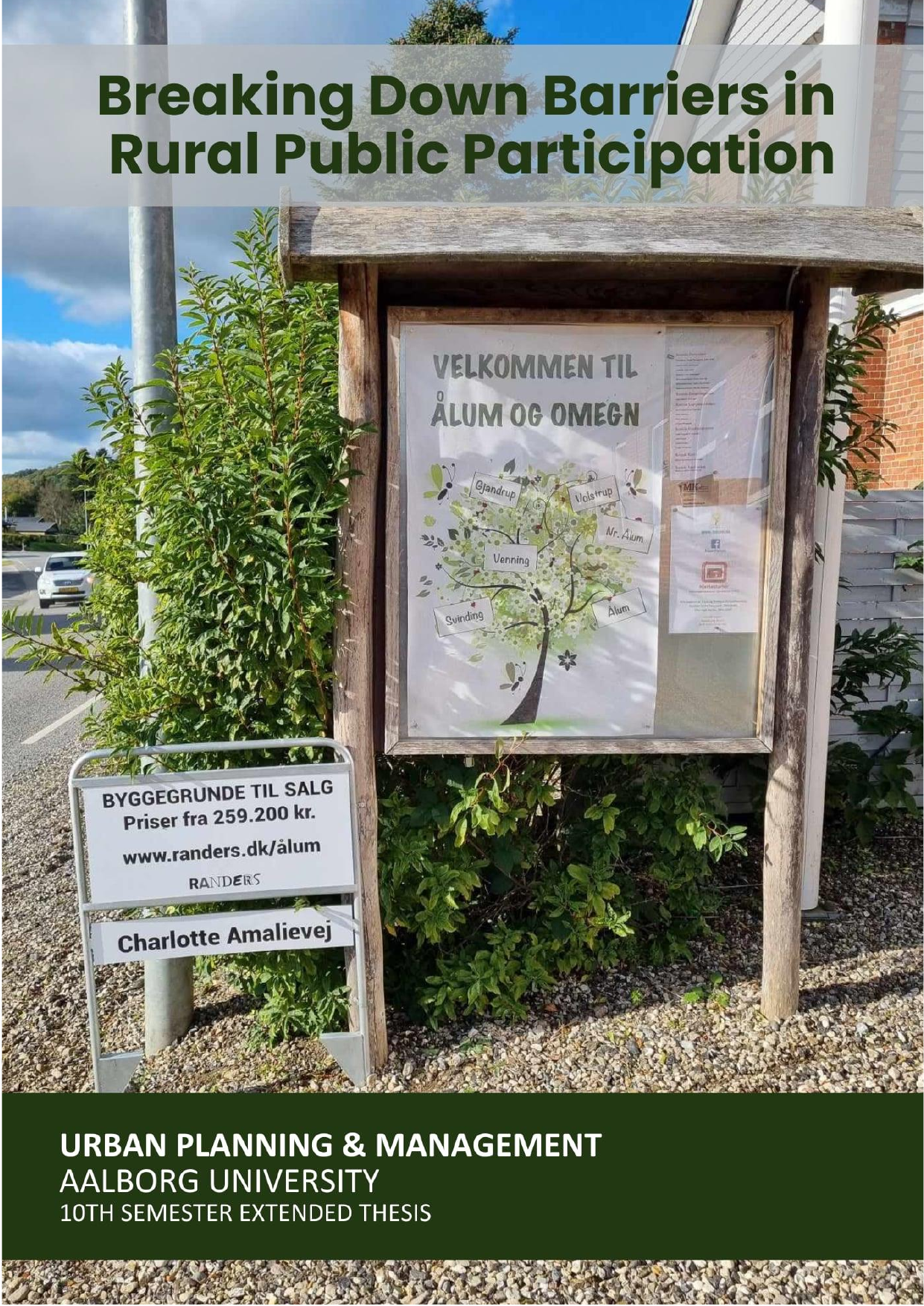
Breaking Down Barriers in Rural Public Participation
Author
Term
4. Term
Publication year
2024
Submitted on
2024-06-07
Pages
119
Abstract
In the context of rural planning to mitigate challenges of shrinkage, participation and activating citizens, is deemed necessary for creating ownership, local anchoring, and local continuation of projects. However rural planning practice relies heavily on active citizens risking exclusion. As such attention to is needed onto how to ensure broad and inclusive participation, and the research aims to answer how inclusive and engaging participation can be shaped in declining rural villages. The study conceptualizes five key components within Danish rural planning participation – legislation, municipal practice, the individual planner, participatory methods, and civil society - and investigates the how these components influence, enable and constrain public participation. Through a qualitative case study of Randers Municipality's planning of a village area renewal in Ålum and Omegn, this study explores the influence of the five components in enabling and constraining inclusive and engaging participation. Among the used participatory methods, the app ‘Snapshot Ålum and Omegn’ was launched to investigate how citizens perceived using images and an app as a method of participation, and how it compared to other citizen engagement methods. The study discusses key barriers in participation from the empirical findings and aims to highlight key learnings and suggestions for improvement to lower these barriers in participation. The study concludes that the components, alone and in conjunction with each other influence participation, and are all embedded within contextual structures. As such, inclusive and engaging public participation in rural villages can be shaped by recognizing and addressing the various barriers and by focusing on the enabling qualities in each of the five components.
Keywords
Documents
